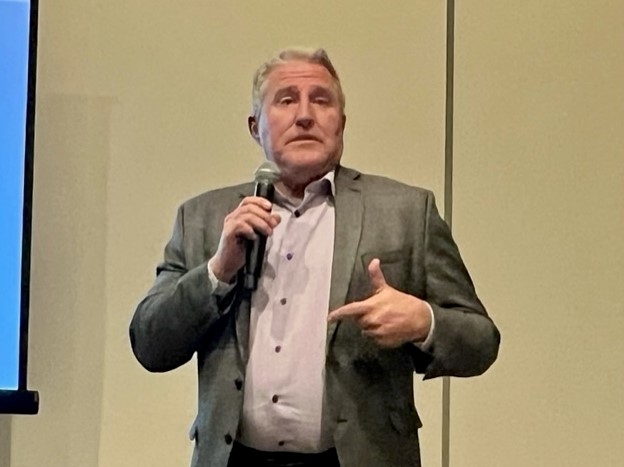
Senior Farm and Ranch Broadcaster, Ron Hays, is visiting again with the president and CEO of the United States Meat Export Federation, Dan Halstrom, talking about key players in accomplishing success in beef exports.
“There was some optimism a week ago that China was about to change their zero-COVID policy,” Halstrom said. “That zero-COVID policy is making it extremely difficult to plan things as simple as a promotion. We have had many different promotions in different provinces that have been delayed or canceled because of a positive COVID case.”
A week ago, at the Shanghai Disney, Halstrom said one positive COVID case resulted in 7,000 people being tested for COVID at the facility that day. That led to another 70,000 close contact individuals that were tracked down, he added, as a result of being in contact with those 7,000 individuals.
“That was from one positive case,” Halstrom said. “So, this is the uncertainty in China that is becoming a little bit difficult for the market to bear, I think. That being said, we were still 23,000 tons of U.S. beef in September, up 5 to 6 percent from a year ago, so that business continues to be really strong, and the question is how long that will last.”
In 2021, China, South Korea, and Japan had two billion dollars worth of beef exports from the United States. In 2022, Japan is not performing quite as well.
“I can really point at two reasons for that,” Halstrom said. “Number one is the headwinds on exchange rate. We already have a duty of 24 to 25 percent going in, and then you add 30 percent devalue to a yen versus the dollar, and you are getting up there.”
Another challenge in Japan, Halstrom said, is that food service is not back to normal.
“They lifted the last emergency declaration on COVID in Japan at the end of April,” Halstrom said. “There are no directives saying that you can’t go out. In fact, there is really no directives on masks, even though everyone still wears them.”
Halstrom said people in Japan have not adjusted to going back into food service fully yet. The desire to have minimal contact is changing slowly, he added, but not back to normal.
“At some point, food service will see a rebound in Japan, and when that happens, we will have a bit of a tailwind for a change there,” Halstrom said.
A lot of work has been put into the beef market in Japan for decades, Halstrom said, which deserves recognition.
“We just had our 40th-anniversary celebration a few months ago in Japan, and it is a testament to the fact that these markets do not develop overnight,” Halstrom said. “It takes years and literally decades of work from a lot of different organizations and individuals to have this sort of success.”
Last year, Halstrom said the U.S had three two-billion-dollar export markets in Korea, Japan and China. Now, Halstrom said the next question is which country will be the next billion-dollar export market.
“The world is evolving, the middle class is growing, and demand, I would argue, has never been better,” Halstrom said.
The tone right now, Halstrom said, is cautiously optimistic, but he expects that to continue. Halstrom said he predicts growth from 4 to 5 percent, which would be a new record, volume-wise.
“On the value side, we are still thinking it is possible we could hit the 12 billion mark,” Halstrom said. “If we don’t, we could be pretty close- an undoubtedly new record over last year’s 10.6 billion. We have headwinds, and we have challenges, but that is nothing new. The industry is used to that. The outlook is still pretty positive.”
Click the LISTEN BAR above the story to listen to Ron Hays and Dan Halstrom talking U.S. Beef Export Outlook.
The Beef Buzz is a regular feature heard on radio stations around the region on the Radio Oklahoma Network and is a regular audio feature found on this website as well. Click on the LISTEN BAR below for today’s show and check out our archives for older Beef Buzz shows covering the gamut of the beef cattle industry today.















